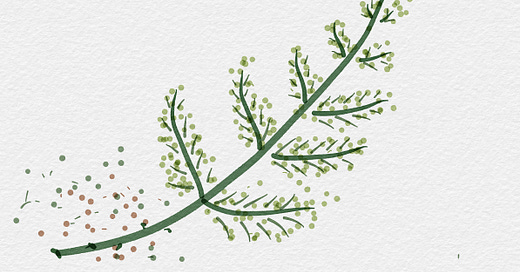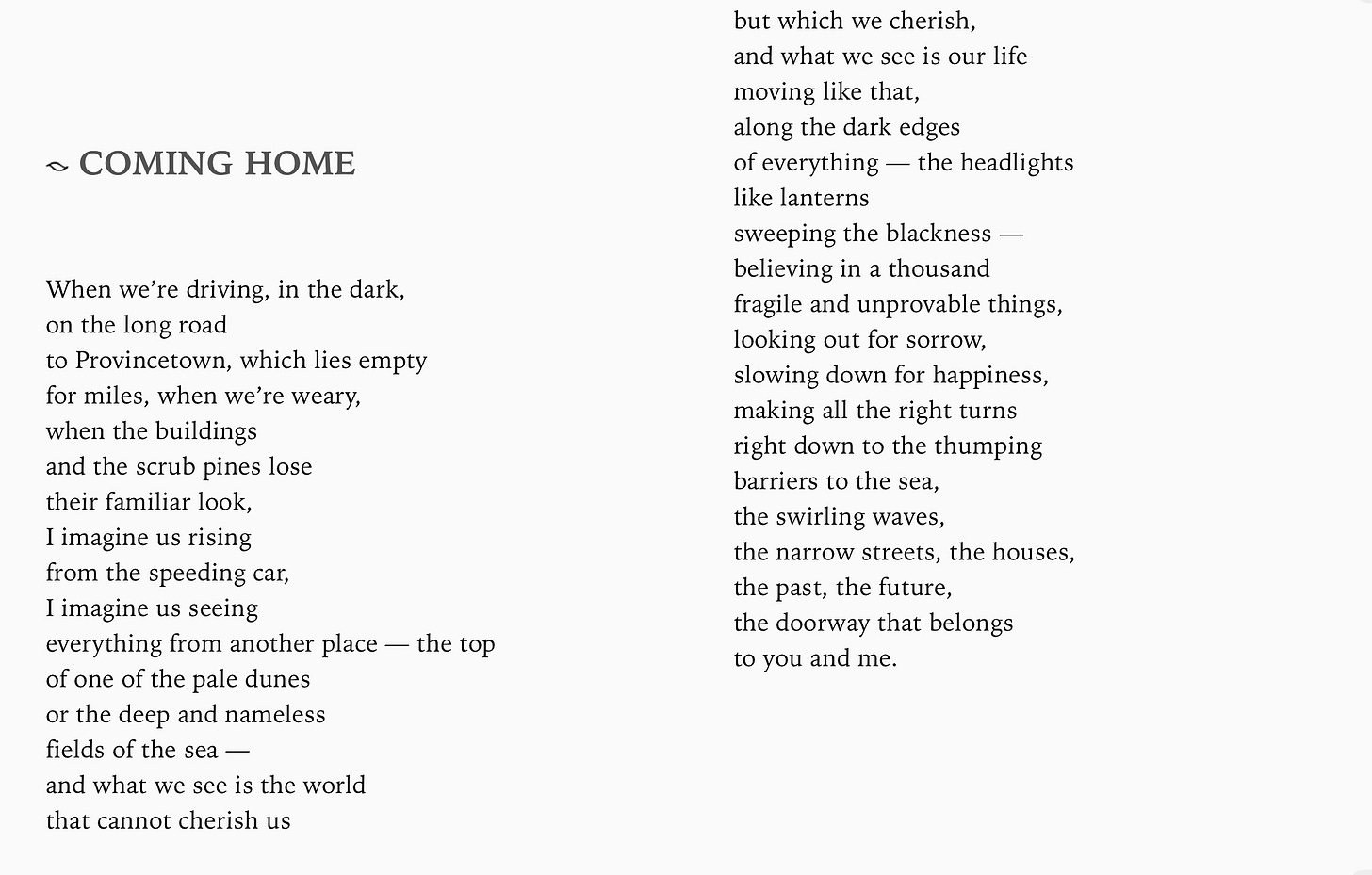I made an attempt to find and draw the shape of Mary Oliver’s poem Coming Home. I found it in nature—in the fern.
The Pinnate Fern
In this form, the frond begins in a petiole (stalk) that becomes the central midrib. The leaf blade branches out on either side of this midrib, forming pinnae (from the Latin penna for feather, wing; also, aptly, where pen comes from) that get successively smaller, culminating at the apex.
Here’s the poem, where you might be able to see how this form plays out. It will work better if you ignore the page break forced by the ebook and see the poem as a single unit.
Coming Home
Mary Oliver
But why stop when you’re having fun? 😊 Why not translate the shape, or maybe even the whole poem, into another visual mode, using a different vocabulary? Same same, but different.
On the Road
I oversized the headlights in the middle and added the slightly smaller taillights—it seems to me that this is a metaphor for all of the seeing, including the future and the past, with the future hopeful. Other symbols also wear similar ‘translations’.
The “we” in the beginning becomes “you and me” in the end, but both enter the same doorway. I wonder if this is significant.
Maybe genuine emotions cannot come through cartoony symbols in unconventional forms. I love words but I don’t think that. Universes can be captured in equations, love and grief and life and joy in simple lines.
Image 1: The Pinnate Fern—finding and drawing the shape of Mary Oliver’s poem Coming Home. Illustration © Kanya Kanchana
Image 2: Coming Home, poem screenshot from my copy of her Pulitzer-winning Dream Work. 1986 © Mary Oliver
Image 3: On the Road—translating and redrawing the shape of Mary Oliver’s poem Coming Home. Illustration © Kanya Kanchana
#poem #shape #form #image #translation






